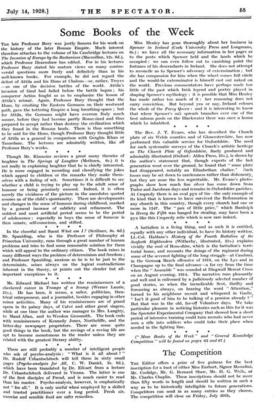Though Mr. Kimmins reviews a great many theories of laughter
in The Springs of Laughter (Methuen, 6s.) it is not really in explaining laughter that he is chiefly interested. He is more engaged in recording and classifying the jokes which appeal to children or the remarks they make them- selves with a feeling of wit. Sometimes it is difficult to see whether a child is trying to play up to the adult sense of humour or being genuinely amused. Indeed, it is often merely the vividness of the picture in the anecdotes quoted assures us of the child's spontaneitY. There are developments and changes in the sense of humour during childhood, marked by a general increase of subtlety and refinement. The saddest and most artificial period seems to be the period of adolescence : especially in boys the sense of humour is then ornate, self-conscious, and stilted.
* * *




































 Previous page
Previous page